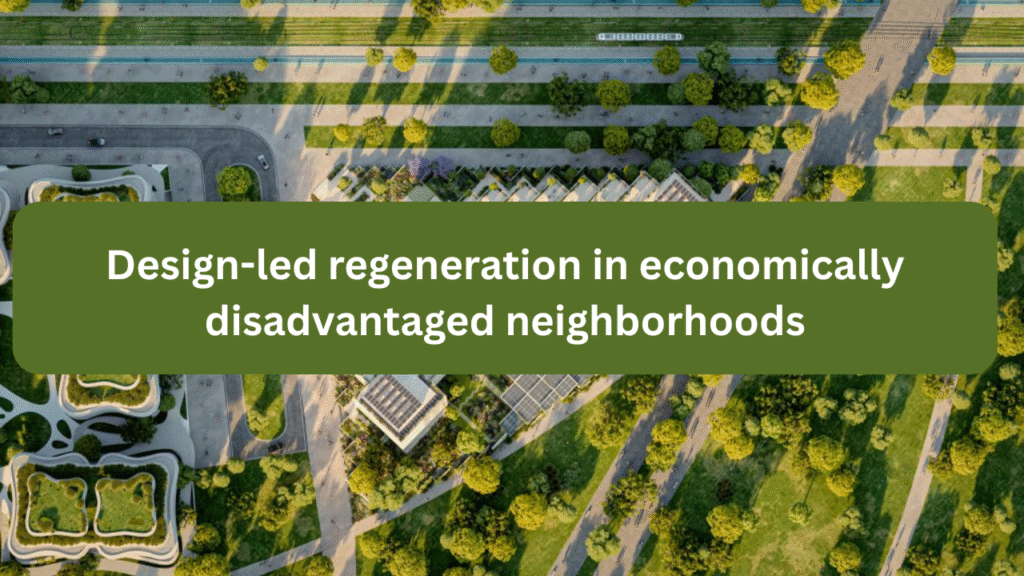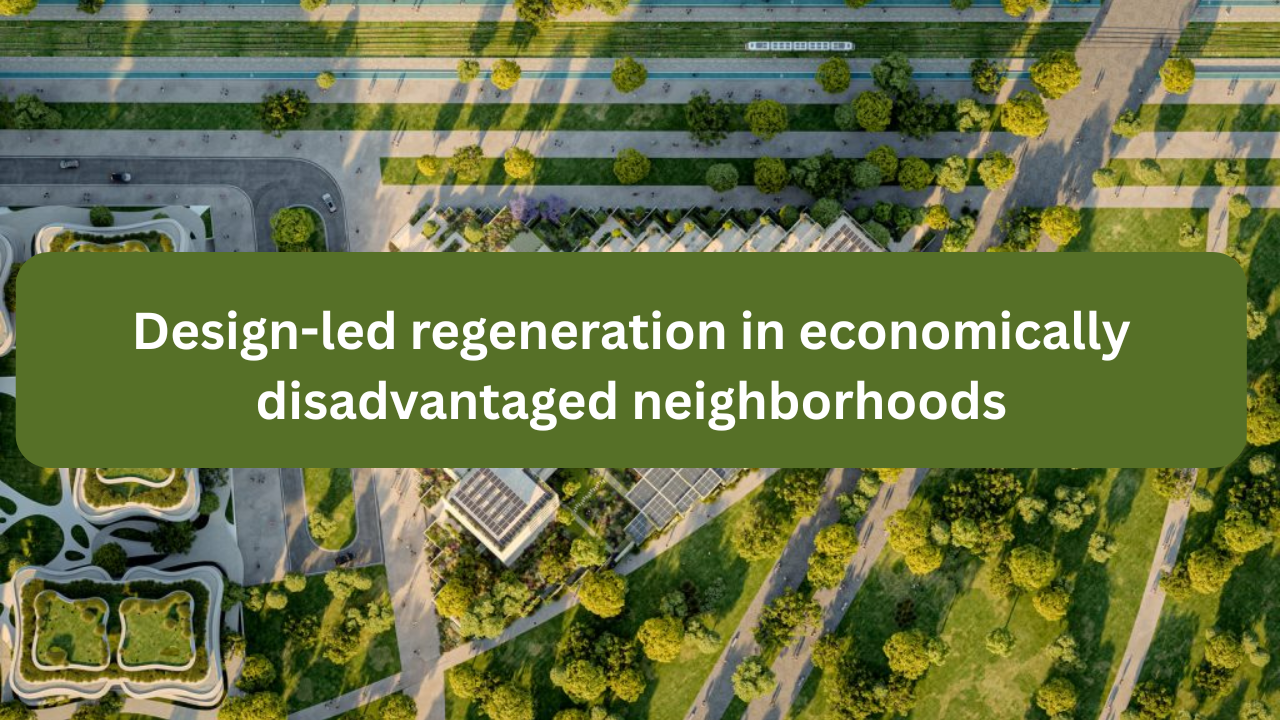
Introduction
Economically disadvantaged neighborhoods often face cycles of poverty, underinvestment, and physical decline. Conventional urban renewal efforts have sometimes failed to address the deeper issues of identity, community pride, and sustainable development. Design-led regeneration offers a different approach—using creative design, architecture, and urban planning as catalysts for social, economic, and cultural revitalization. This method focuses not just on physical improvements, but on crafting spaces that foster inclusion, empower residents, and attract long-term investment.
Understanding Design-Led Regeneration
Design-led regeneration is the application of high-quality, human-centered design principles to urban redevelopment. It aims to:
- Enhance the physical environment
- Strengthen local identity and cultural heritage
- Stimulate economic activity
- Improve community well-being
Rather than imposing top-down solutions, design-led regeneration works in partnership with communities, ensuring that development reflects local aspirations and needs.
Why It’s Important for Disadvantaged Areas
Neighborhoods struggling with economic hardship often suffer from:
- Deteriorating housing and public spaces
- Limited access to amenities and services
- Low property values and investment
- Weak social cohesion
Design-led regeneration tackles these issues by combining aesthetics with functionality, making spaces attractive, accessible, and supportive of community life.
Core Principles of Design-Led Regeneration
1. Community Engagement in Design
Involving residents in co-creating public spaces ensures cultural relevance and builds ownership.
2. Adaptive Reuse of Existing Structures
Transforming vacant buildings into community hubs, art spaces, or small business centers preserves history while reducing waste.
3. Mixed-Use Development
Blending residential, commercial, and cultural facilities encourages economic activity and reduces urban segregation.
4. Public Realm Enhancement
Upgrading streetscapes, lighting, and green spaces improves safety, walkability, and social interaction.
5. Place-Making with Identity
Integrating local art, heritage elements, and storytelling strengthens neighborhood pride and recognition.
Benefits of Design-Led Regeneration
| Benefit Area | Key Impact | Example Implementation |
|---|---|---|
| Social | Builds community pride | Murals co-designed by residents |
| Economic | Attracts businesses | Renovated shopfront programs |
| Environmental | Improves livability | Tree-lined streets and parks |
| Cultural | Preserves local heritage | Adaptive reuse of historic sites |
| Safety | Reduces crime | Better lighting and active street fronts |
| Health | Encourages active lifestyles | Walking trails and bike lanes |
Global Examples
1. Granby Four Streets, Liverpool, UK
Once a nearly abandoned area, it was revived through community-led design, with residents collaborating with architects to refurbish houses, create markets, and establish community gardens.
2. Medellín Library Parks, Colombia
Architecturally striking libraries were placed in disadvantaged neighborhoods, providing cultural access, education, and safe public spaces.
3. High Point Redevelopment, Seattle, USA
A public housing project redesigned with green building principles, mixed-use spaces, and parks, improving health outcomes and economic opportunities for residents.
Challenges in Implementation
- Risk of Gentrification: Rising property values may displace original residents if affordability measures aren’t in place.
- Funding Limitations: High-quality design can be expensive without partnerships or public funding.
- Balancing Aesthetics and Function: Attractive spaces must also meet practical needs for residents.
- Sustaining Engagement: Long-term success depends on ongoing community involvement, not just during the planning phase.
Strategies for Successful Design-Led Regeneration
- Inclusive Planning – Engage diverse community groups from the outset.
- Affordability Safeguards – Include rent controls or housing subsidies to protect existing residents.
- Phased Development – Start with high-impact, visible improvements to build momentum.
- Public-Private Partnerships – Combine resources from local government, developers, and nonprofits.
- Cultural Anchors – Use public art, festivals, and cultural institutions to reinforce identity.
Overview Table
| Aspect | Traditional Urban Renewal | Design-Led Regeneration |
|---|---|---|
| Approach | Top-down | Collaborative and community-driven |
| Aesthetic Value | Often minimal | Central to strategy |
| Social Inclusion | Limited | High priority |
| Use of Existing Assets | Often demolished | Adaptive reuse preferred |
| Impact Focus | Infrastructure only | Social, cultural, and economic |
| Risk of Displacement | Higher without safeguards | Mitigated through planning |
Conclusion
Design-led regeneration proves that beauty, functionality, and inclusivity can work together to transform economically disadvantaged neighborhoods. By involving residents, respecting heritage, and creating vibrant, multi-purpose spaces, this approach fosters economic growth while preserving community identity. The result is not just a physical makeover but a lasting social transformation that empowers people and places.
3 Quick FAQs
Q1: How does design-led regeneration differ from traditional redevelopment?
A: It prioritizes high-quality design, cultural relevance, and community involvement rather than purely economic or infrastructural goals.
Q2: Can design-led regeneration prevent gentrification?
A: Yes, if affordability measures and inclusive policies are built into the project from the start.
Q3: Is it suitable for small communities?
A: Absolutely—its flexibility allows for impactful, context-specific projects in both small towns and large cities.

